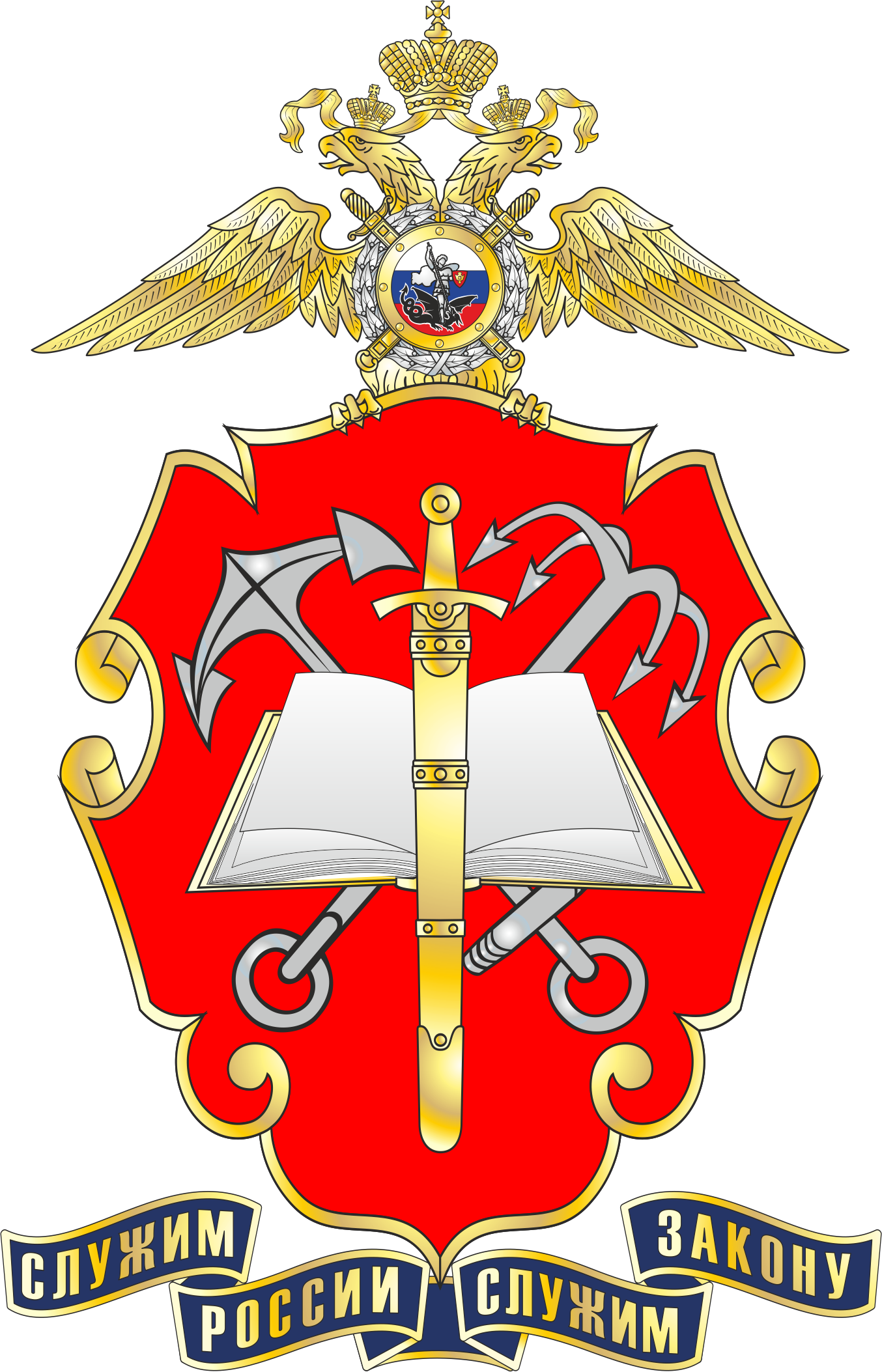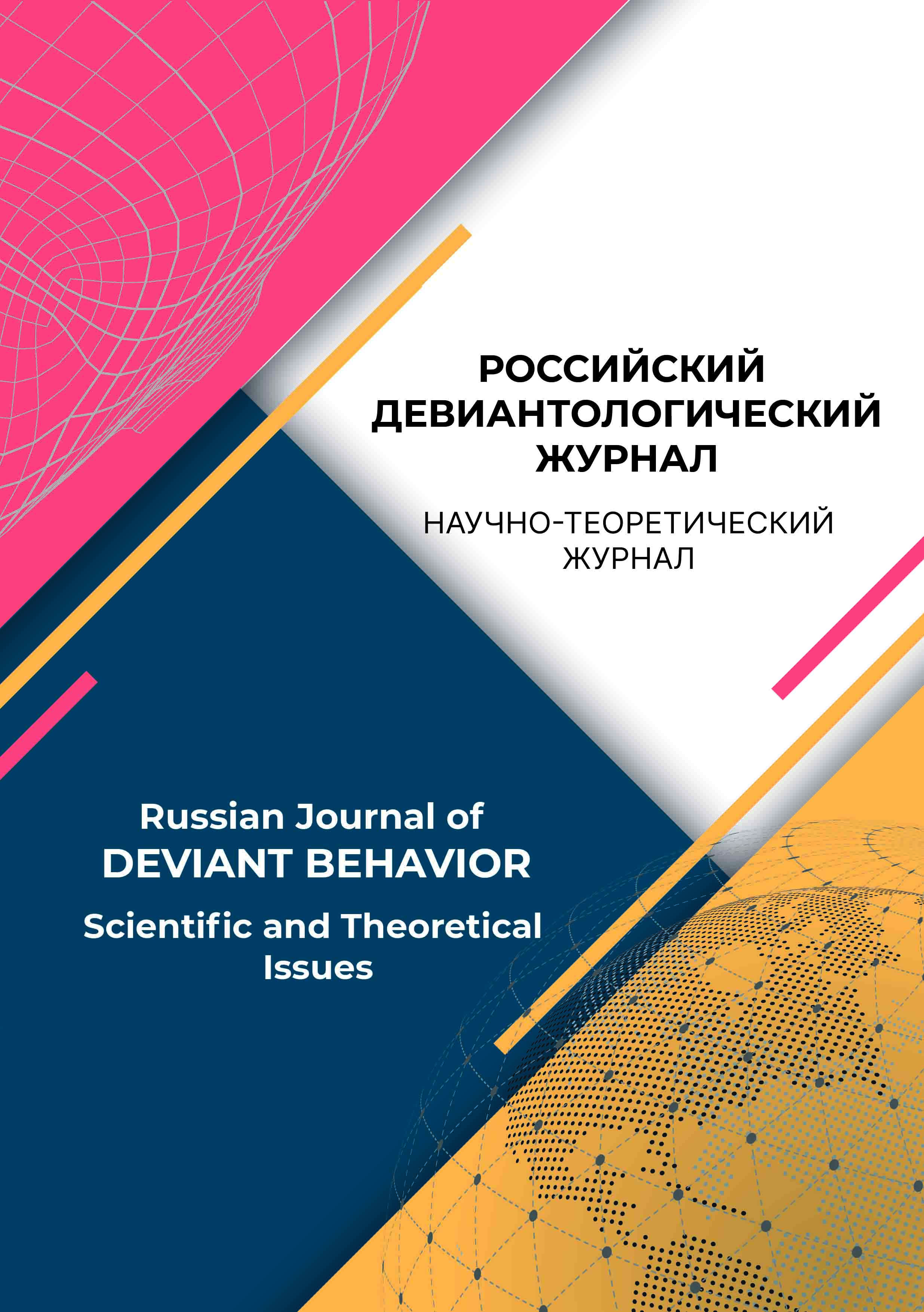Russian Federation
Introduction. LGBT communities belong to groups with deviant behavior. A small amount of information about the structure of the LGBT community causes the following problems: 1. Disinformation and negative attitude towards the activities of the LGBT community. 2. The LGBT community consists of significantly different groups with different needs and specific problems, which leads to misunderstandings and conflicts of interests within the social movement. 3. Hidden conflicts within the LGBT community have an influence on its activity. The purpose of the research is to study the peculiarities of intergroup relations within the LGBT community. Methodology, methods and techniques. Participants were 134 representatives of the LGBT community. The sample included 34 lesbians, 8 gays, 16 bisexuals, 27 transgender, 15 asexual people, 14 pansexual and 20 genderqueer or non-binary people. Quantitative and qualitative methods were used in the study. The respondents were asked to fill out a questionnaire including the following techniques: 1. Questionnaire “Components of social capital” by L. G. Pochebut; 2. Questionnaire “SEP” by L. G. Pochebut; 3. Questionnaire “The need for affiliation” by A. Mahrebian; 4. Questionnaire “Measuring trust” by R. B. Sho; 5. Open questions. Results. When analyzing the data, the following significant intergroup differences were identified: indicators of “trust” and “goals and values” are lower among transgender people than lesbian, pansexual and genderqueer people. The level of trust among pansexual people is higher than in other groups. “Fear of social rejection” with asexual people is higher than with prosexual people, while the same indicator with asexual people is higher than “fear of social rejection” with lesbian, gay and pansexual people. Gays have lower “fear of social rejection” than transgender people. At the same time, the latter are less inclined to collectivism than cisgender. Lesbians are more prone to affective neutrality than gay and transgender people, while homosexual men are likely to be affective than other groups. Bisexual people are more prone to universalism than other groups. Scientific novelty of the research is determined by the fact that intergroup relations in the LGBT community have not been previously investigated by Russian scientists. Practical significance. To provide effective counselling being in great demand nowadays among LGBT people, it is necessary to understand community peculiarities and relations between groups.
sexual attraction, lesbian, gay, bisexual people, transgender people, transgender people, cross-dressers, asexual people, heterosexuality, homosexuality
1. Boswell, J. (1980). Christianity, Social Tolerance, and Homosexuality: Gay People in Western Europe from the Beginning of the Christian Era to the Fourteenth Century. Chicago: The University of Chicago Press.
2. Callis, A. (2016). Beyond bi: sexual fluidity, identity, and the post-bisexual revolution. In S. Seidman, N.L. Fischer, C. Meeks (eds.), Introducing the New Sexuality Studies (pp. 231-240). London: Routledge.
3. Carrigan, M. (2011). There’s more to life than sex? Difference and commonality within the asexual community. Sexualities, 14(4), 462-478. DOI:https://doi.org/10.1177/1363460711406462
4. Cavendish, M. (2010). Sex and society. New York: Marshall Cavendish.
5. Chasin, CJ. DL. (2015). Making sense in and of the asexual community: Navigating relationships and identities in a context of resistance. Journal of Community & Applied Social Psychology, 25(2), 167-180. DOI: 10.1002/ casp.2203
6. Coleman, J. S. (1994). Foundations of Social Theory. Cambridge: Harvard University Press. DOI:https://doi.org/10.12681/sas.623
7. Eliason, M. J. (1997). The Prevalence and Nature of Biphobia in Heterosexual Undergraduate Students. Archives of sexual behavior, 26(3), 317-326. DOI:https://doi.org/10.1023/A:1024527032040
8. Englestein, L. (1995). Soviet policy toward male homosexuality: its origins and historical roots. Journal of Homosexuality, 29(2-3), 155-178. DOI:https://doi.org/10.1300/J082v29n02_06
9. Hartman, J. E. (2006). Another kind of “Chilly Climate”. The Effects of lesbian separatism on bisexual women’s identity and community. Journal of Bisexuality, 5(4), 61-76.
10. Herek, G. M. (1990). The context of anti-gay violence: Notes on cultural and psychological heterosexism. Journal of interpersonal violence, 5(3), 316-333. DOI:https://doi.org/10.1177/088626090005003006
11. Hill, D. B., & Willoughby, B. (2005). The Development and Validation of the Genderism and Transphobia Scale. Sex roles, 53(7), 531-544. DOI:https://doi.org/10.1007/s11199-005-7140-x
12. Khabar, I. (2016). Gender Identity: Intersex Individuals. Journal of Psychology and Clinical Psychiatry, 6(7). DOI:10.15406/ jpcpy.2016.06.00406
13. Lang, C., & Kuhnle, U. (2008). Intersexuality and Alternative Gender Categories in Non-Western Cultures. Hormone Research in Paediatrics, 69(4), 240-250. DOI:https://doi.org/10.1159/000113025
14. Leap W., Boellstorff T. (ed.). (2004). Speaking in Queer Tongues: Globalization and Gay Language. Chicago: University of Illinois Press.
15. Rapp, L. (2015). Symbols by Linda Rapp. In GLBTQ Symbols, Encyclopedia of Gay, Lesbian, Bisexual, Transgender, and Queer Culture (vol. 4).
16. Lockard, D. (1986). The lesbian community: An anthropological approach. Journal of Homosexuality, 11(3-4), 83-95.
17. MacInnis, C. C., & Hodson, G. (2012). Intergroup bias toward “Group X”: Evidence of prejudice, dehumanization, avoidance, and discrimination against asexuals. Group Processes & Intergroup Relations, 15(6), 725-743. DOI:https://doi.org/10.1177/1368430212442419
18. MacNeela, P., & Murphy, A. (2015). Freedom, Invisibility, and Community: A Qualitative Study of Self-Identification with Asexuality. Archives of sexual behavior, 44(3), 799-812. DOI:https://doi.org/10.1007/s10508-014-0458-0
19. Mulick, P. S., & Wright Jr L. W. (2002). Examining the existence of biphobia in the heterosexual and homosexual populations. Journal of Bisexuality, 2(4), 45-64. DOIhttps://doi.org/10.1300/J159v02n04_03
20. Oswald, R. F., Blume, L. B., & Marks, S. R. (2005). Decentering heteronormativity: A model for family studies. In V.L. Bengtson, A.C. Acock, K.R. Allen, P. Dilworth-Anderson & D.M. Klein (eds.), Sourcebook of family theory and research (pp. 143-165).
21. Rice, K. (2015). Pansexuality. In The international encyclopedia of human sexuality (pp. 861-1042). New York: Wiley. DOI:https://doi.org/10.1002/9781118896877.wbiehs328
22. Richards, C., Bouman, W. P., Seal, L., Barker, M. J., Nieder, T. O., & T’Sjoen, G. (2016). Non-binary or genderqueer genders. International Review of Psychiatry, 28(1), 95-102. DOI:https://doi.org/10.3109/09540261.2015.1106446
23. Richards C., Bouman, W. P., & Barker, M. J. (eds.) (2017). Genderqueer and non-binary genders. London: Palgrave Macmillan. DOI:https://doi.org/10.1057/978-1-137-51053-2
24. Tilcsik, A. (2011). Pride and prejudice: Employment discrimination against openly gay men in the United States. American Journal of Sociology, 117(2), 586-626. DOI: 10.1086 / 661653
25. Weiss, J. (2011). Reflective Paper: GL Versus BT: The Archaeology of Biphobia and Transphobia Within the U.S. Gay and Lesbian Community. Journal of Bisexuality, 11(4), 498-502. DOI:https://doi.org/10.1080/15299716.2011.620848
26. Andreeva, G. M. (2001). Social’naya psihologiya: uchebnik dlya vysshih uchebnyh zavedenii. Aspekt Press.
27. Auslander, L. (2001). ZHenskie + feministskie + muzhskie + lesbijskie-gej + kvir.issledovaniya = gendernye issledovaniya? V S.V. ZHerebkin (red.), Vvedenie v gendernye issledovaniya: hrestomatiya, CH. II, (Str. 63-92). Aletejya; Izd-vo HCGI.
28. Burd`e, P. (2005). Socziologiya soczial`nogo prostranstva. Moskow: Institut e`ksperimental`noj socziologii; Saint Petersburg: Aletejya.
29. Gus`kova, N. D., Klyueva, A. P. (2012). Sovremenny`e teorii soczial`nogo kapitala. Izvestiya vy`sshikh uchebny`kh zavedenij. Povolzhskij region, 2(22), 152-160.
30. Deryagin, G. B. (1934). Gomoseksualizm. Biseksual`nost`. Polucheno iz www. sudmed-nsmu. narod.ru/articles/homosex. html.
31. Dzhagoz, A. (2008). Vvedenie v kvir-teoriyu. Moskow: Kanon +.
32. Diligenskij, G. G. (1975). Nekotory`e metodologicheskie problemy` issledovaniya psikhologii bol`shikh soczial`ny`kh grupp. In E.V. Shorokhova (ed.), Metodologicheskie problemy` soczial`noj psikhologii (pp. 196-205). Moskow: Nauka.
33. Il`in, E. P. (2013). Psikhologiya doveriya. Saint Petersburg: Piter.
34. Kon, I. S. (2001). Lyubov` nebesnogo czveta. Saint Petersburg: Prodolzhenie zhizni.
35. Kon, I. S. (2003). Liki i maski odnopoloj lyubvi. Moskow: Izdatel`stvo AST.
36. Koulman, Dzh. (2001). Kapital soczial`ny`j i chelovecheskij. Obshhestvenny`e nauki i sovremennost`, 3, 122-139.
37. Kocharyan, G. S. (2009). Gomoseksual`ny`e otnosheniya i sovremennaya Rossiya. Zhurnal psikhiatrii i mediczinskoj psikhologii, 1(21), 133-147.
38. Kuprejchenko, A. B. (2008). Psikhologiya doveriya i nedoveriya. Moskow: Institut psikhologii RAN.
39. Master, U., Dzhonson, V., Kolodni, R. (1998). Osnovy` seksologii. Moskow: Mir.
40. Nestik, T. A. (2009). Soczial`ny`j kapital organizaczii: soczial`nopsikhologicheskij analiz. Psikhologicheskij zhurnal, 30(1), 52-63.
41. Nomerovskaya, A. D. (2014). Problema normativnosti v diskurse kvir-teorii. Istoricheskie, filosofskie, politicheskie i yu¬ridicheskie nauki, kul`turologiya i iskusstvovedenie. Voprosy` teorii i praktiki, 11-2(49), 125-128.
42. Patne`m, R. (1995). Proczvetayushhaya Kom`yuniti, soczial`ny`j kapital i obshhestvennaya zhizn`. Mirovaya e`konomika i mezhdunarodny`e otnosheniya, 4, 117-125.
43. Pochebut, L. G., Mejzhis, I. A. (2010). Soczial`naya psikhologiya. Saint Petersburg: Piter.
44. Pochebut, L. G., Beznosov, D. S. (2018). Soczial`no-psikhologicheskaya teoriya soczial`nogo kapitala organizaczii: Tru¬dy` Instituta psikhologii RAN. In Soczial`no-psikhologicheskaya teoriya soczial`nogo kapitala organizaczii (pp. 269-275). Moskow: Institut psikhologii RAN.
45. Pochebut, L. G. (2011). Psikhologiya obshhestva i soczial`ny`j kapital. Vestnik Sankt-Peterburgskogo universiteta. Seriya 12. Socziologiya, 1, 18-25.
46. Pochebut, L. G. (2011). Kross-kul`turnaya i e`tnicheskaya psikhologiya. Saint Petersburg: Piter.
47. Svencziczkij, A. L., Pochebut, L. G., Kiloshenko, M. I., Kuzneczova, I. V., Mararicza, L. V., Kazanczeva, T. V. (2009). Soczial`ny`j kapital i ego formirovanie: soczial`nopsikhologicheskij podkhod. Vestnik Sankt-Peterburgskogo uni¬versiteta. Seriya 12. Socziologiya, 3-2, 140-149.
48. Sozaev, V. (2010). LGBT-dvizhenie v Rossii: portret v inter`ere. Genderny`e issledovaniya, 20-21, 90-126.
49. Tikhonova, N. E. (2004). Soczial`ny`j kapital kak faktor neravenstva. Obshhestvenny`e nauki i sovremennost`, 4, 24-35.
50. Fukuyama, F. (1999). Doverie. Soczial`ny`e dobrodeteli i sozidanie blagosostoyaniya. In V.L. Inozemczeva (ed.), Novaya postindustrial`naya volna na Zapade. Antologiya (pp. 129-130). Moskow: Academia.
51. Shikhirev, P. N. (2002). Soczial`ny`j kapital: biznes i e`tika. Problemy` povy`sheniya delovoj kul`tury`: materialy` mezhregional`noj nauchno-prakticheskoj konferenczii (pp. 3-4). Kirov.
52. Sho, R. B. (2000). Klyuchi k doveriyu v organizaczii: Rezul`tativnost`. Poryadochnost`. Proyavlenie zaboty`. Moskow: Delo.














